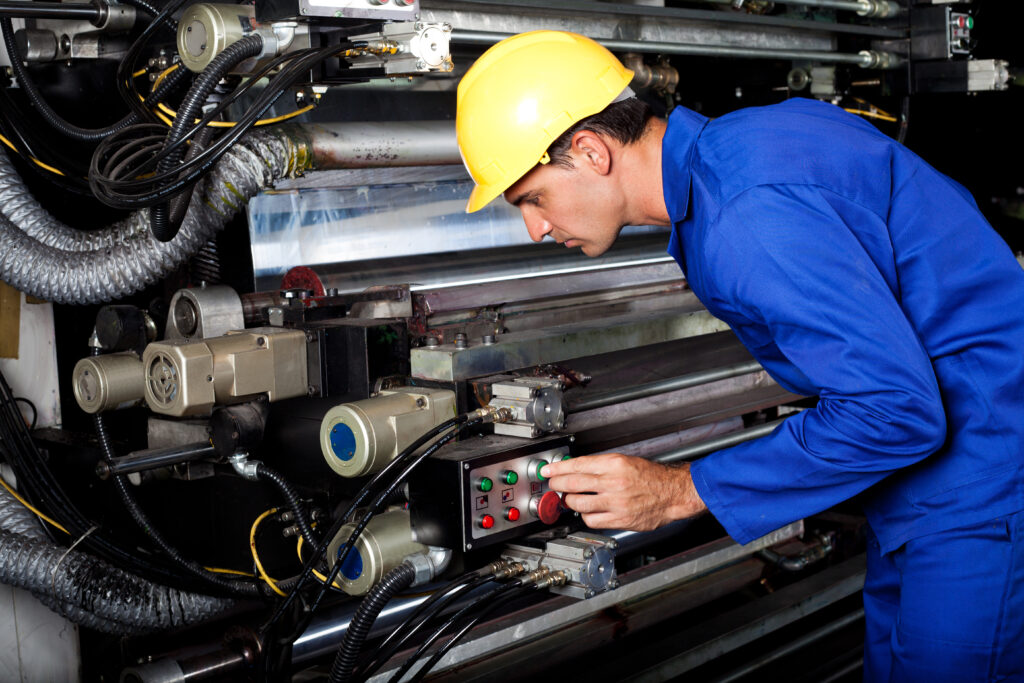At the heart of every industrial manufacturing company’s success is its ability to remain efficient and productive, and in order to accomplish this, companies have to rely upon machinery on the production floor to perform to the specifications promised by the manufacturer. Eventually, though, a piece of machinery will break or reach the end of its productive life cycle, and it will be time to replace the unit. This raises the age-old business dilemma: do you buy the shiniest, newest model on the market, or do you scour the pre-owned marketplaces for the best-used alternatives money can buy? Here at the Equipment Hub, we believe you should explore all of your options, and so we’ve gathered a list of benefits and reasons to pursue the pre-owned route. Let’s dig into why buying used machinery could be the better option for your organization.
Cost Considerations
In an industry where production costs can be the difference between profitability and loss, every business decision boils down to one seemingly simple question: how much will this cost us in the short- and long-term? Buying pre-owned can have some very positive impacts on your bottom line

Affordability
Out of the gate, used equipment is the cheaper option. Depending on how complex and specialized the equipment is, the difference between used and new can be significant. Used alternatives for industrial equipment can range from 30%-70%, dependent primarily upon the quality and condition. This is especially true when considering older models with similar functionality – sometimes it’s not necessary to go with the brand new unit, complete with all of the bells and whistles if your business needs aren’t measurably impacted by those bells and whistles.
Increased Cash Flow
Other than catastrophic equipment failure, machinery generally has an expected life cycle that can be planned out in the budgeting process. With the need to purchase materials for use in the manufacturing process balanced against the flow of income based on production levels, the less expensive used machinery alternative provides a double-benefit by allowing you to replace equipment as planned, maintain production levels in order to meet client needs, and simultaneously increase the amount of money you have to invest elsewhere by reducing the amount you had budgeted for investing in new equipment. Any opportunity to increase cash flow in order to better invest in the production capacity of your operation is a win for your organization.
Quicker Path to Recouping Investment and Positive ROI
While we’re on the topic of things your accounting department will love about the purchase of used machinery, an investment in equipment is only lucrative once it’s been paid off. By reducing your machinery costs from 30%-70%, you’re ensuring a positive return on your investment in the piece of equipment that much faster.
Depreciation and Resale Costs
Like with any major investment, new machinery begins to lose value from the moment of purchase. Depreciation within the first year can be upwards of 40%. Alternatively, properly cared for and maintained used machinery retains value for at least five years, and can even turn a profit with effective market research.
Minimized Lead Time with Used Machinery
Purchasing new equipment can be a complicated and time-consuming process, depending upon demand for equipment. Supply lines, shipping delays, availability of parts or materials to manufacture the piece of equipment, or any other number of factors can influence your ability to actually acquire the equipment you need in order to maintain your own production levels. What would it cost your operation if a piece of equipment fails and needs to be replaced as soon as possible, and the manufacturer provides a six month lead time for delivery? Alternatively, if you go the pre-owned route, used machinery is usually available immediately, and typically can be in place within two weeks of purchase.
The Equipment Your People Know Best
The costs of purchasing new equipment go beyond the cost of the unit itself. A primary investment that must be considered is the time and cost associated with training personnel to use the new machine properly, and how that might impact productivity in the meantime. Used machinery makes it possible to acquire or reacquire equipment your staff is comfortable using, which minimizes downtime and training time and allows your team to maintain a level of productivity and efficiency.
Reduced Environmental Impact
As modern machinery becomes more complex and the inner workings more advanced, disposing of such equipment becomes as dangerous and toxic to the environment as e-waste. Control boards and circuitry are made of materials that cannot go into landfills, and it takes significant effort and costs in order to break large industrial machinery down in order to recover reusable materials. Purchasing perfectly functional used equipment allows your organization to become part of the solution and minimize the impact on the environment by extending the life of existing equipment.

Considerations When Purchasing Used Machinery
Buying pre-owned machinery leads to a number of benefits for your operation but only if you keep three key factors in mind as you research your purchase.
Condition
In some rare instances, you might be purchasing used machinery in order to break it down for parts to repair and maintain the condition of your existing equipment on the manufacturing floor. More often, you’ll need your newly purchased pre-owned equipment to function straight out of the gate in order to maintain production levels. Research the service records and ownership history of pre-owned equipment as thoroughly as you can, and when possible inspect the equipment ahead of time. .
Source of Used Machinery
Make sure you are purchasing from a reputable reseller. Do your homework, check reviews, and talk to them ahead of time about your specific needs. Find out if people who have done business with them in the past are willing to endorse the vendor.
Hidden Additional Costs
When researching the cost of machines you intend to purchase, there are three common associated costs for used machinery you should keep in mind. Shipping or delivery costs should be expected as part of the purchasing process, but if the equipment is still installed at the owner’s facility, there might be a cost to you, the purchaser, to have that equipment uninstalled. If the machinery is purchased as part of an auction or liquidation, there might also be what’s referred to as a buyer’s premium – essentially a finder’s fee for the broker of the deal – attached to the cost as well. In the long-term, you have to take into consideration that the equipment is used, and as such might have reached a point where certain maintenance and upkeep services might be required and be more costly at this point in the life cycle of the equipment than if the unit were new.
The Equipment Hub Means Business When It Comes to Used Machinery
Purchasing manufacturing equipment, new or used, is a significant investment for any organization, and we here at the Equipment Hub want to ensure you have access to options that fit your budget and needs. We resell machinery from hundreds of heavy equipment manufacturers, and we provide a number of different purchase options to fit your business model. If you’re in the market for used machinery, contact our professional solutions experts today, so we can help you keep your operation running efficiently and on budget.
Sign Up for Our Newsletter
Sign up for our newsletter using the form below to get company insights and updates directly in your inbox!




